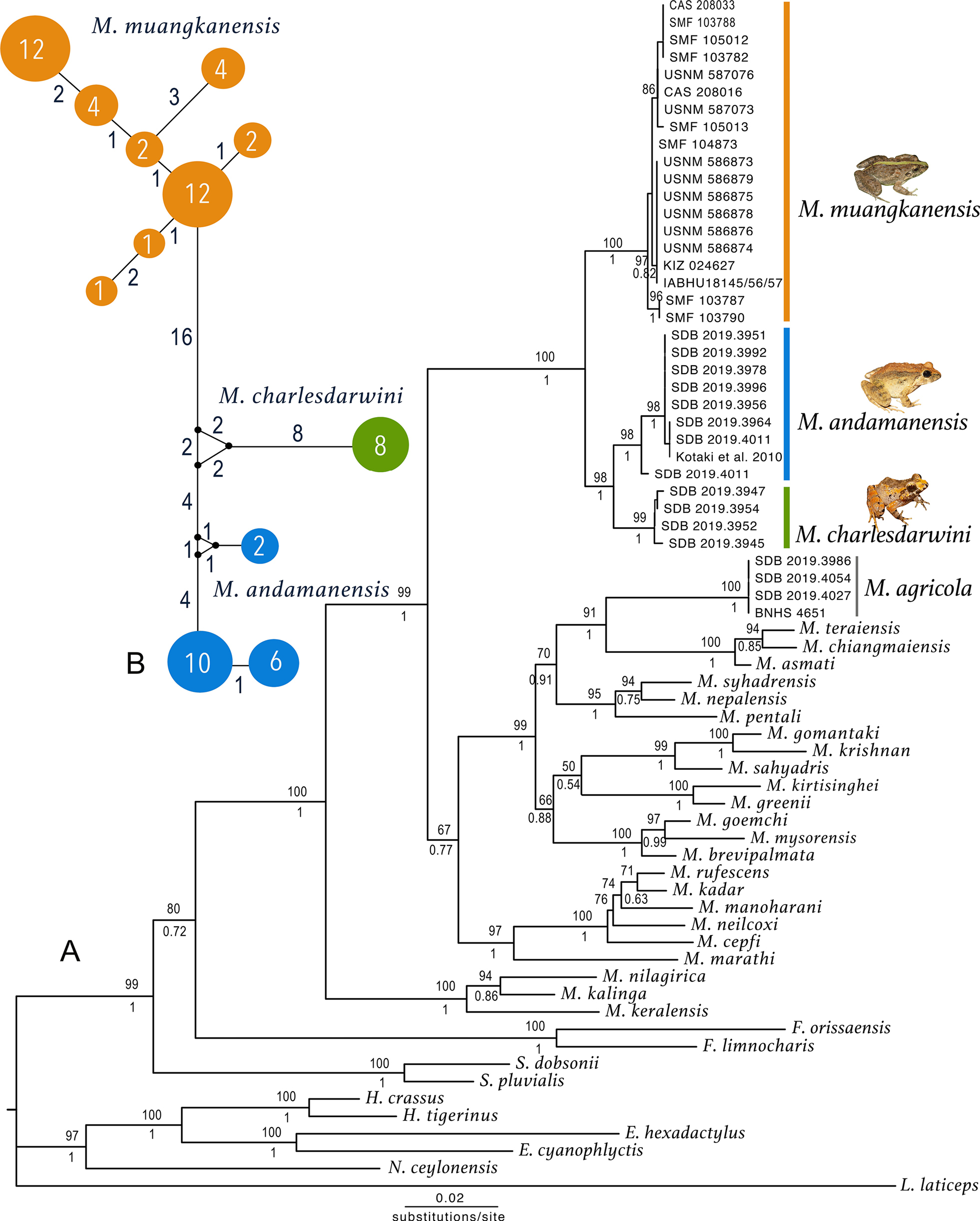
|
||
|
Phylogenetic position and genetic structure of species in the Minervarya andamanensis species group. A. Maximum likelihood phylogram based on a multi-gene dataset (2,101 bp of mitochondrial and nuclear DNA), depicting the phylogenetic position of Minervarya charlesdarwini comb. nov. in the genus Minervarya and relationships among three members of the M. andamanensis species group. Voucher numbers at terminal nodes are referenced in Table 1. Values above and below the branches represent Ultrafast Bootstrap Support (UFB, >50%) and Bayesian Posterior Probabilities (BPP, >0.50), respectively. Vertical bars indicate the recovery of three M. andamanensis group members as distinct species in multi-gene bPTP species delimitation analysis. B. Median-Joining network based on 513 bp of the mitochondrial 16S gene depicting the genetic structure among three species. Circle colours indicate different species; circle size is proportional to the frequency of haplotypes; black circles indicate median vectors; values on circles indicate frequency of haplotypes; values on connecting branches indicate number of mutation steps. |